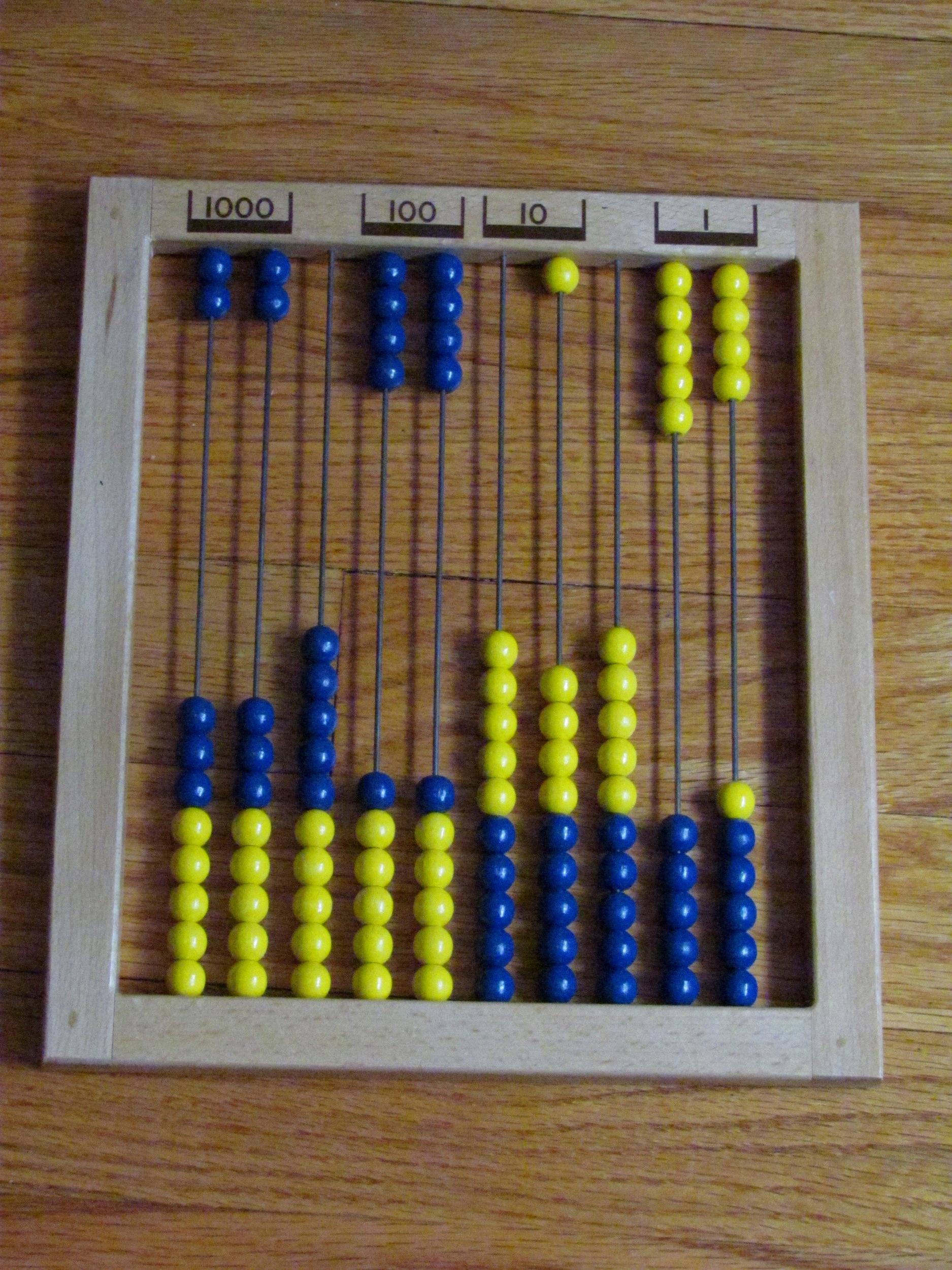Welcome to the wonderful world of the Abacus! If you’re learning how to use one, you’ve come to the right place. The abacus has been around for centuries, and is still a useful tool for math-lovers around the world. With just a few simple steps, you can learn how to use it and add it to your repertoire of tools for making calculations.
The abacus consists of a frame with rods that hold beads. Each bead corresponds to a number. The most common type of abacus is the suanpan, which consists of two decks – one with two beads on each rod and one with five beads on each rod. To use an abacus, start by setting up all the beads in their outermost positions – so that no beads are touching the middle bar that divides each deck into two sections. Each column represents one digit in the number being calculated, with the rightmost column representing ones and then progressing to left for tens, hundreds etc.
To perform calculations on an abacus, begin by setting up your problem using the outermost positions of all the beads in each column representing their corresponding numbers (e.g., 4 in ones column). Then move some or all of those beads closer towards the middle bar within their respective columns (2 in ones column). This will allow you to add or subtract numbers depending on what kind of calculation you are trying to do (addition or subtraction). Using this method, you can also multiply and divide numbers by continually moving some or all of those beads closer towards or away from the middle bar until you reach your desired result.
Abacus is an incredibly useful tool for making quick calculations witout having to write out long equations. It’s also a great way to practice mental math skills, as well as help visually impaired people learn math concepts more easily than they would be able to if they were solely relying on written numbers and equations. So get ready – now that you know how it works, grab an abacus and start calculating!
Calculating with an Abacus
Calculating with an abacus is a straightforward process that fllows the same rules as standard arithmetic. To begin, slide all of the beads to the outer edge of their columns so that none are touching the center bar. Then, use each column of the abacus to represent one digit in the number being calculated. For example, if you’re calculating a two-digit decimal number, the right-most column will be the ones column and the next column to its left will be the tens column. Once you have determined which columns correspond to which digits, you can start adding numbers together by moving beads inward. To add two numbers together, start with the right-most digit and move one bead inward for each unit added; for example, if you are adding 7 and 8 together, move one bead inward from 8 in the ones column and another in from 7 in the tens column (giving you 5 in the ones column and 1 in the tens). Once all of your calculations are complete, slide all beads back to their original positions on either side of their respective columns.

Source: mdpi.com
Is Abacus Easy to Use?
Yes, the abacus is a surprisingly easy tool to use. The basic principle involves counting beads on metal rods that are arranged in columns. To add two numbers, you simply move an appropriate number of beads up for one column and down for the other. Subtracting is done by moving an appropriate number of beads down for one column and up for the other. Since the abacus is a tactile device, it allows users to quickly gain a sense of how numbers interact with each other. The physical nature of the device also helps people understand mathematical concepts such as place value, addition, subtraction, multiplication and division more easily than if they were using a pencil and paper or even a modern calculator. So while it may take some time to learn how to use an abacus effectively, once you understand its basics, it can be surprisingly easy to use.
The Benefits of an Abacus Compared to a Calculator
An abacus is a tool with a long history of use in mathematics. It consists of a frame with rods that hold beads that can be used to represent numbers and the counting of them. An abacus can be used to do basic arithmetic operations such as addition, subtraction, multiplication, and division quickly and accurately.
Calculators, on the oher hand, are electronic devices that can perform calculations faster than an abacus but are not always as accurate. Calculators generally have limited memory and cannot perform some operations as easily as an abacus.
In a contest comparing the two tools, an abacus scored 4 points against 1 point for the electric calculator. This indicates that an abacus is better than a calculator when it comes to speed and accuracy in basic arithmetic operations, particularly if those operations involve all four operations combined.
Overall, an abacus is better than a calculator when it comes to doing basic arithmetic quickly and accurately. However, calculators are more versatile and may be better for complex calculations or for situations where speed is essential.
Using an Abacus for Math
An abacus is a powerful tool that can be used to perform a variety of mathematical operations. It can be used to add, subtract, multiply, divide, calculate square roots and cube roots. It is typically operated with one hand using eiter the index finger or thumb to manipulate the beads along each rod. The abacus is an incredibly versatile tool for performing basic mathematical calculations quickly and accurately.

Source: kateshomeschoolmath.com
Conclusion
In conclusion, the abacus is an incredibly versatile and powerful tool for calculation that has been around for centuries. It can be used by people of all ages and abilities, from children who are learning basic mathematical skills to adults in finance or engineering who need more complex calculations. The abacus is particularly useful for visually impaired individuals, as it allows them to gain a visual understanding of numerical concepts. Despite its simplicity, the abacus remains a powerful and reliable calculating device.












